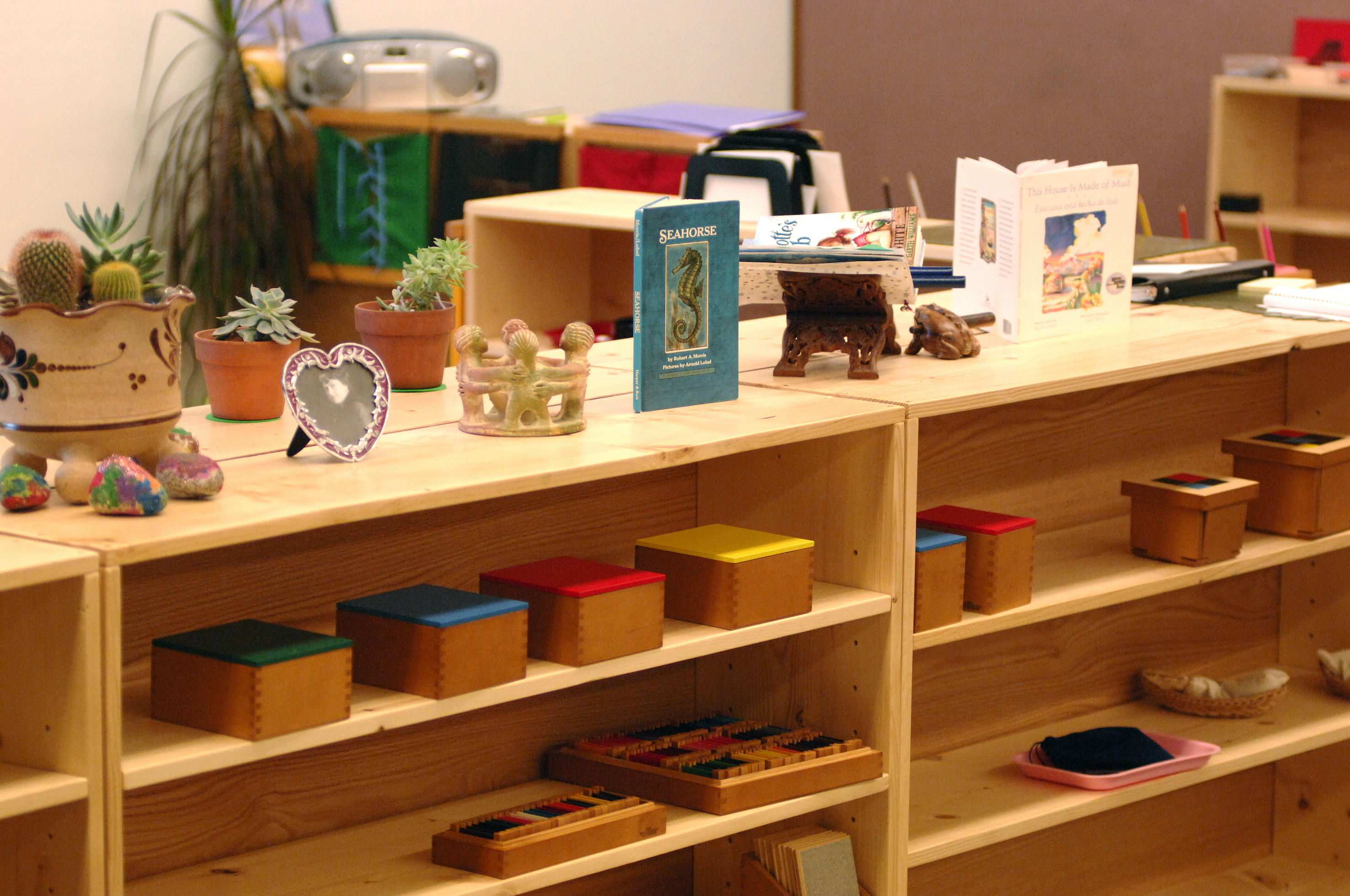A Learning Environment Prepared for Independence:
A Key Ingredient for Inspired Learning
Does your learning environment inspire independence? Has your environment gone stale? Is it cluttered or disorganized? Are your children engaged with it? In this article, I examine four fundamental areas to consider in creating a learning environment that works.
This is the third article in the series: Key Ingredients for a Learning-Inspired “Classroom” at Home or in School
Dr. Maria Montessori wrote in The Absorbent Mind:
"How does he achieve this independence? He does it by means of a continuous activity. How does he become free? By means of constant effort…we know that development results from activity. The environment must be rich in motives which lend interest to activity and invite the child to conduct his own experiences."
Dr. Maria Montessori, The Absorbent Mind, p. 84
The environment, according to Montessori, should call to the child, enticing her to the activity. Each item on the shelf is placed with the intention of inspiring the student to take action of one sort or another. As guides, we ask ourselves how the item will be used, who will most want to use it, what aspects of the work will draw the child in and then, how we will introduce the activity so the child can’t help herself but to return to it again and again until her inner voice says, “I’m satisfied.”
We Montessorians look at the elements of the classroom as the Child, the Adult, and the Environment, with each element having a powerful influence on the other. Our preparations of the environment are fully a third of the work that will guide the student to independent action in self-directed learning. In more than 30 years of preparing classrooms in dozens of different spaces, my colleagues and I identified key ingredients that influenced success.
First, the physical space must encourage appropriate movement. Children need to move to learn. The position of furniture must allow for flowing movement, unencumbered access to materials and supplies, and spaces designed with purpose in mind: eating, cleaning, big project planning and execution, material manipulation, writing, artistic endeavors, as well as quiet spaces for reading, reflecting, and centering oneself between action tasks.

The placement of the materials on the shelf is also a communication to children through the environment. Not only are they orderly and uncluttered, the materials follow a sequence that leads the student into deeper and more complex challenges in a natural progression.
With these first two considerations one can see that the environment tells the child how to function within it more loudly and consistently than the adult voice, whose turn to speak is through environmental design. After that, the adult becomes a guide in its use.
There must also be beauty: little touches of art or color or natural artifacts that the child wishes to touch with one of his senses. Magnifying glasses placed nearby say, “Look closely.” They invite inquiry with a question: “What’s hidden in the tiny reaches that my eye can’t discern?” They suggest, “Be an observer!”
Unlike a museum, which often places strong guidelines around touching (ie. not touching), our environments must tell the child that touching is ok. “Make me shiny!”, “Hold me gently” or “Move me carefully” may need to be modeled and coached, but the natural responses from each activity should also direct the child. They also say “Glass breaks. Here’s how you can clean up when one falls to the floor.”
The environments for the older child may include something of a “Directions for Use” in the form of a work plan or study guide, but the intention of the materials on the shelves, as well as that of the “Directions” is the same: to spur the child to take action that meets some inner desire to know.
So, when we create an environment, we must know our children. We must understand how they approach the world and what drives them to go beyond any fear that might keep them from taking the risk of trying something. Dr. Montessori said we must be seductive in our introductions and focus on the wonder. If we are successful, the child will take it from there. If we didn’t hit the mark and the child is not drawn to the work as we’d hoped, then we try again, with the same spirit of enthusiasm and intention to inspire. We must trust the child to have the desire somewhere inside her. Our role in the environment is to find that hidden longing and to ignite her passion.
Of our little triad, the adult is the designer, the child the actor, and the environment the stage. When we set it with care, intention, and attention to the fine points, it does it’s work without the actor even knowing.
Wondering what to do next? Whether new to environment preparation or highly skilled and looking for inspiration, this link will bring you to practical applications you can try today!